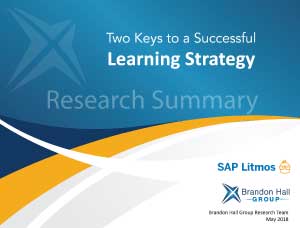Two Keys to a Successful Learning Strategy
When was the last time you drove somewhere you’d never been before — without punching the address into your GPS or map app? Or you had a human co-pilot (or navigator) sitting next to you, providing directions. Outside of these two scenarios, you probably took a long, meandering ride that didn’t get you where you needed to go.
Unfortunately, this is how many companies approach learning. They know they need to get somewhere, so they jump in the metaphorical car and drive. You can be the best driver on earth, but if you don’t know where you’re going, you’ll get lost. Developing and delivering learning without an appropriate strategy will get you just as lost.
We’ve spent a lot of time talking about the future of learning and what the learning experience should be. My colleague, Michael Rochelle and I explored this in our Litmos LIVE Session, The Learning Evolution Revolution.
When considering how learning should be delivered, companies often begin with the technology piece, trying to figure out which set of tools can deliver the ideal experience. But technology is actually one of the last pieces that should be considered. It is simply a tool with which to execute the strategy, a means to an end.
Your learning strategy is how you know your efforts are aligned with the business. It’s how you know the technologies and other tools you use are getting results. It’s the only way to get a true measurement of how effective your learning initiatives really are.

On the alignment side, we found that fewer than half of the companies believe their learning strategy is linked to the overall business strategy and a mere seven percent say it is very well aligned. This means that most companies are operating in the dark. Without alignment, there is no way to link learning to outcomes or measure its impact. These are the top two challenges to achieving critical learning outcomes.
Delivering the right blend of learning modalities, technologies and experiences is how the strategy is fulfilled. There must to be alignment here, too. A hodgepodge of unrelated technologies isn’t an effective way to deliver learning. The technology ecosystem must be driven by the strategy, the requirements of the business and the needs of the learners. This blend won’t remain static and will shift depending on the changing needs of the business. The learning strategy must embrace this flexibility.
Getting caught up in the dazzling array of evolving learning technologies only serves to make it harder to deliver results. A solid strategy that is aligned with the business will help crystallize and simplify the technology decision.



